Introduction: Making Healthy Eating Possible on Hectic Days
In today’s fast-paced world, finding time to prepare nutritious meals often feels impossible. After a long day of work, school runs, and countless other responsibilities, the thought of spending hours in the kitchen can seem overwhelming. Yet, proper nutrition remains crucial for maintaining energy levels, supporting overall health, and fueling our busy lives. Quick and healthy weeknight recipes have become essential tools in the modern household, allowing families to enjoy wholesome meals without sacrificing precious time.
This collection of 10 quick and healthy recipes for busy weeknights is designed specifically for time-strapped individuals who refuse to compromise on nutrition. Each recipe requires minimal preparation, uses readily available ingredients, and can be completed in 30 minutes or less—perfect for those evenings when time is of the essence but you still want to nourish yourself and your loved ones with delicious, health-conscious meals.
Why Quick and Healthy Recipes Matter for Busy Professionals
The Impact of Nutrition on Productivity and Wellbeing
The food choices we make directly influence our energy levels, mental clarity, and overall productivity. When we’re busy, the temptation to rely on processed convenience foods or takeout becomes stronger, yet these are precisely the times when our bodies need proper nourishment most. Nutrient-dense meals provide sustained energy, improve concentration, and help manage stress—all crucial factors for high-performing professionals.
Research consistently shows that a balanced diet rich in whole foods contributes significantly to cognitive function and emotional stability. By incorporating quick and healthy recipes into your weekly routine, you’re not just saving time in the kitchen; you’re investing in your capacity to handle demanding schedules and challenging tasks with greater ease.
Furthermore, establishing healthy eating patterns, even during the busiest times, creates a foundation for long-term wellbeing. These habits ripple outward, influencing other aspects of health including sleep quality, immune function, and even workplace performance.
Breaking the Fast Food Cycle with Home-Cooked Alternatives
The average American spends over $3,000 annually on dining out, with a significant portion going toward fast food and takeout during the work week. Beyond the financial cost, this habit often comes with nutritional compromises—excess sodium, unhealthy fats, and larger portion sizes than we might prepare at home.
By mastering a repertoire of quick and healthy weeknight meals, you create a practical alternative to the takeout cycle. These recipes prove that home-cooked food can be both convenient and nutritious, often taking less time than ordering and waiting for delivery. Plus, cooking at home gives you complete control over ingredients and portion sizes, allowing for customization based on personal health goals and dietary preferences.
Essential Kitchen Tools for Quick and Healthy Cooking
Time-Saving Equipment Every Busy Cook Needs
The right kitchen tools can dramatically reduce preparation and cooking time, making healthy weeknight meals more accessible. Consider these essential items for your quick-cooking arsenal:
- High-quality chef’s knife: Perhaps the most important tool in any kitchen, a sharp chef’s knife makes chopping and prepping significantly faster and safer
- Instant Pot or pressure cooker: These multi-functional appliances can reduce cooking times by up to 70% for many dishes, from beans and grains to proteins
- Sheet pans: Perfect for simple roasted vegetable meals and sheet pan dinners where everything cooks together
- Food processor: Makes quick work of chopping, slicing, and pureeing
- Immersion blender: Ideal for quick soups and sauces without transferring hot liquids
Investing in even a few of these tools can transform your weeknight cooking experience, making healthy meal preparation feel less like a chore and more like an achievable part of your routine.
Pantry Staples for Healthy Weeknight Cooking
A well-stocked pantry eliminates last-minute grocery store runs and provides the foundation for countless quick meals. Keep these nutrient-rich staples on hand for healthy weeknight cooking:
- Whole grains: Quick-cooking options like quinoa, bulgur, and instant brown rice
- Beans and legumes: Both canned and dried varieties provide protein and fiber
- Healthy oils: Extra virgin olive oil, avocado oil, and sesame oil for different cooking methods
- Canned tomatoes: The base for countless quick sauces and soups
- Herbs and spices: These add flavor without calories or sodium
- Nuts and seeds: For quick protein and healthy fats
- Frozen vegetables: Pre-chopped and ready to add to any meal
With these items regularly stocked, you’ll always have the building blocks for nutritious meals, even when fresh grocery shopping hasn’t been possible.
Recipe 1: Mediterranean One-Pot Pasta
Ingredients and Preparation
This 30-minute Mediterranean pasta brings together whole grain nutrition, plant-based protein, and vegetables in one simple pot. By cooking everything together, you’ll save on cleanup while creating a deeply flavored, nutritious meal.
- 8 oz whole wheat pasta
- 1 pint cherry tomatoes, halved
- 1 small red onion, thinly sliced
- 3 cloves garlic, minced
- 1 can (15 oz) chickpeas, drained and rinsed
- 2 cups baby spinach
- ¼ cup olives, pitted and sliced
- 2 tablespoons olive oil
- 1 teaspoon dried oregano
- ½ teaspoon red pepper flakes (optional)
- 3 cups vegetable broth
- ¼ cup crumbled feta cheese
- Fresh basil leaves for garnish
Place all ingredients except spinach, feta, and basil in a large pot. Bring to a boil, then reduce heat and simmer uncovered for about 10-12 minutes, stirring occasionally until pasta is al dente and most liquid is absorbed. Stir in spinach until wilted. Serve topped with feta and fresh basil.
Nutritional Benefits and Storage Tips
This Mediterranean pasta delivers a powerful nutritional punch, providing complex carbohydrates from whole wheat pasta, plant protein from chickpeas, and an array of vitamins and minerals from the vegetables. The olive oil offers heart-healthy monounsaturated fats, while the herbs and spices provide antioxidants.
For busy professionals, this dish works perfectly for meal prep. Store in airtight containers in the refrigerator for up to 3 days, or freeze individual portions for up to 3 months. If freezing, slightly undercook the pasta and omit the feta and fresh herbs, adding them after reheating for the best texture and flavor.
Recipe 2: Sheet Pan Chili-Lime Chicken with Vegetables
Ingredients and Preparation
Sheet pan meals represent the pinnacle of weeknight cooking efficiency—minimal prep work and cleanup with maximum flavor. This colorful sheet pan chicken dinner offers lean protein paired with a rainbow of vegetables.
- 1 pound boneless, skinless chicken breasts, cut into 1-inch pieces
- 1 red bell pepper, sliced
- 1 yellow bell pepper, sliced
- 1 small red onion, sliced
- 1 medium zucchini, sliced into half-moons
- 2 tablespoons olive oil
- 2 tablespoons lime juice
- 1 tablespoon honey
- 2 cloves garlic, minced
- 1 teaspoon chili powder
- ½ teaspoon cumin
- ¼ teaspoon cayenne (optional for heat)
- Salt and pepper to taste
- Fresh cilantro for garnish
- Lime wedges for serving
Preheat oven to 425°F. In a small bowl, whisk together olive oil, lime juice, honey, garlic, and spices. Place chicken and vegetables on a large sheet pan, pour marinade over everything, and toss to coat. Arrange in a single layer. Roast for 20-25 minutes, stirring halfway through, until chicken is cooked through and vegetables are tender and slightly caramelized. Garnish with fresh cilantro and serve with lime wedges.
Nutritional Benefits and Variation Ideas
This sheet pan meal provides an excellent balance of lean protein and fiber-rich vegetables. The bell peppers deliver ample vitamin C, while the chicken offers complete protein to support muscle maintenance and recovery after long workdays or fitness routines. The chili-lime flavor profile brings antioxidant-rich spices to the meal without adding excess calories.
For variations on this quick sheet pan dinner, consider these adaptations:
- Swap chicken for firm tofu or salmon
- Use different seasonal vegetables like Brussels sprouts, sweet potatoes, or broccoli
- Change the flavor profile with different spice blends—try Italian herbs, curry powder, or a BBQ seasoning
Recipe 3: 15-Minute Miso Ginger Soup with Vegetables
Ingredients and Preparation
When time is especially tight, this quick miso soup comes together in just 15 minutes yet delivers remarkable flavor and nutrition. Miso, a fermented soybean paste, creates a deeply satisfying umami base while contributing beneficial probiotics.
- 4 cups low-sodium vegetable or chicken broth
- 3 tablespoons white or yellow miso paste
- 1 tablespoon grated fresh ginger
- 2 cloves garlic, minced
- 8 oz firm tofu, cubed
- 1 cup sliced mushrooms (shiitake or button)
- 1 medium carrot, thinly sliced
- 2 cups baby bok choy or spinach, roughly chopped
- 2 green onions, sliced
- 1 tablespoon low-sodium soy sauce or tamari
- 1 teaspoon sesame oil
- Optional: cooked soba noodles or brown rice
Bring broth to a gentle simmer in a medium pot. Place miso paste in a small bowl and whisk in about ½ cup of the hot broth until smooth. Add this mixture back to the pot along with ginger, garlic, tofu, mushrooms, and carrots. Simmer for 5 minutes. Add bok choy or spinach and cook just until wilted, about 1 minute. Remove from heat and stir in soy sauce and sesame oil. Serve garnished with green onions, adding optional noodles or rice if desired.
Nutritional Benefits and Immune-Boosting Properties
This quick healing soup is particularly valuable during busy periods when immune support becomes crucial. Ginger and garlic offer anti-inflammatory and antimicrobial properties, while miso contributes beneficial probiotics for gut health—increasingly recognized as fundamental to overall immunity.
The vegetables provide a spectrum of vitamins and minerals, while tofu adds plant-based protein that’s easy to digest. For those experiencing stress from demanding schedules, this gentle yet nourishing soup can provide comfort without requiring significant time or energy to prepare.
Recipe 4: High-Protein Quinoa Power Bowl
Ingredients and Preparation
Grain bowls represent the perfect formula for balanced nutrition with minimal cooking time. This protein-packed quinoa bowl follows a simple template that can be adapted based on what you have available.
- 1 cup quinoa, rinsed
- 2 cups water or broth
- 1 can (15 oz) black beans, drained and rinsed
- 1 cup cherry tomatoes, halved
- 1 avocado, sliced
- 2 cups baby spinach or mixed greens
- ¼ cup red onion, finely diced
- ¼ cup pumpkin seeds
- For the dressing:
- 3 tablespoons olive oil
- 2 tablespoons lime juice
- 1 clove garlic, minced
- 1 teaspoon cumin
- ½ teaspoon smoked paprika
- Salt and pepper to taste
Cook quinoa according to package directions, typically 15 minutes. While quinoa cooks, prepare the dressing by whisking all ingredients together. Assemble bowls with cooked quinoa as the base, topped with beans, tomatoes, avocado, greens, onion, and pumpkin seeds. Drizzle with dressing just before serving.
Nutritional Benefits and Meal Prep Strategies
This quinoa bowl delivers complete nutrition in one simple dish. Quinoa provides all nine essential amino acids, making it a complete protein source that’s rare in the plant world. Combined with black beans, this meal offers substantial protein—typically 15-20 grams per serving. The healthy fats from avocado and pumpkin seeds help with nutrient absorption and provide sustained energy.
For efficient meal prep, consider these approaches:
- Cook a large batch of quinoa at the beginning of the week
- Prepare the dressing and store separately
- Chop hardy vegetables like onions and store in containers
- Keep more perishable items like avocado and greens whole until assembly
This strategy allows you to assemble fresh bowls in under 5 minutes on busy weeknights.
Recipe 5: 10-Minute Garlic Butter Shrimp with Zucchini Noodles
Ingredients and Preparation
For those evenings when you’re truly pressed for time, this lightning-fast seafood dinner comes together in just 10 minutes while delivering impressive nutrition and flavor. Using spiralized vegetables in place of traditional pasta significantly reduces cooking time while boosting nutrient density.
- 1 pound large shrimp, peeled and deveined
- 2 medium zucchini, spiralized (or 4 cups pre-spiralized zucchini)
- 2 tablespoons olive oil, divided
- 3 cloves garlic, minced
- 1 tablespoon butter
- ¼ teaspoon red pepper flakes
- Juice of half a lemon
- 2 tablespoons fresh parsley, chopped
- Salt and pepper to taste
- 2 tablespoons grated Parmesan cheese (optional)
Pat shrimp dry and season with salt and pepper. Heat 1 tablespoon olive oil in a large skillet over medium-high heat. Add shrimp and cook for 1-2 minutes per side until pink and opaque. Remove to a plate. In the same skillet, add remaining oil and garlic, cooking for 30 seconds until fragrant. Add zucchini noodles and sauté for 2-3 minutes until just tender but still slightly crisp. Return shrimp to the pan along with butter, red pepper flakes, and lemon juice. Toss until butter is melted and everything is well combined. Garnish with parsley and optional Parmesan before serving.
Nutritional Benefits and Low-Carb Appeal
This quick low-carb dinner offers numerous health benefits, particularly for those monitoring their carbohydrate intake or seeking lighter evening meals. Shrimp provides high-quality protein with minimal calories—a 4-ounce serving contains approximately 24 grams of protein for just 120 calories. Zucchini noodles deliver fiber, potassium, and vitamin C while containing roughly 85% fewer carbohydrates than traditional pasta.
For busy professionals concerned with weight management or blood sugar regulation, this meal provides satisfying flavors and textures without the energy crash that can sometimes follow carbohydrate-heavy dinners. The healthy fats from olive oil and butter help with satiety, making this light meal surprisingly filling.
Recipe 6: Speedy Vegetarian Chickpea Curry
Ingredients and Preparation
This quick vegetarian curry proves that deeply flavored, comforting meals don’t need to simmer for hours. By using canned chickpeas and pre-made curry paste, you can create a nutrient-dense, protein-rich dinner in under 25 minutes.
- 2 tablespoons olive or coconut oil
- 1 medium onion, diced
- 2 cloves garlic, minced
- 1 tablespoon fresh ginger, grated
- 2-3 tablespoons red or yellow curry paste (adjust to desired spice level)
- 2 cans (15 oz each) chickpeas, drained and rinsed
- 1 can (14 oz) diced tomatoes
- 1 can (14 oz) coconut milk
- 2 cups spinach or kale, roughly chopped
- Juice of half a lime
- ¼ cup fresh cilantro, chopped
- Salt to taste
- Optional: cooked brown rice or cauliflower rice for serving
Heat oil in a large pot over medium heat. Add onion and cook for 3-4 minutes until softened. Add garlic and ginger, cooking for another minute until fragrant. Stir in curry paste and cook for 30 seconds. Add chickpeas, diced tomatoes, and coconut milk, stirring to combine. Bring to a simmer and cook uncovered for 15 minutes, allowing flavors to meld and sauce to slightly thicken. Stir in greens and cook just until wilted. Remove from heat and add lime juice, cilantro, and salt to taste. Serve over optional rice.
Nutritional Benefits and Anti-Inflammatory Properties
This chickpea curry delivers exceptional nutrition in a comforting format. Chickpeas provide plant-based protein and fiber, supporting digestive health and sustained energy. The combination of spices in curry paste—typically including turmeric, cumin, coriander, and chili—offers powerful anti-inflammatory compounds that may help counteract the physical effects of stress and busy lifestyles.
Particularly notable is curcumin, the active compound in turmeric, which has been extensively studied for its anti-inflammatory and antioxidant properties. For busy professionals dealing with stress, incorporating anti-inflammatory foods like this curry can support overall wellbeing while satisfying comfort food cravings.
Recipe 7: Lightning-Fast Breakfast-for-Dinner Frittata
Ingredients and Preparation
When traditional dinner prep feels overwhelming, a protein-rich frittata offers a perfect solution—quick, customizable, and nutritionally complete. This versatile dish transforms everyday ingredients into a satisfying meal in under 20 minutes.
- 8 large eggs
- ¼ cup milk (dairy or plant-based)
- ½ teaspoon salt
- ¼ teaspoon black pepper
- 1 tablespoon olive oil
- 1 small onion, diced
- 1 red bell pepper, diced
- 2 cups baby spinach
- 1 cup cherry tomatoes, halved
- ½ cup feta cheese, crumbled
- 2 tablespoons fresh herbs (parsley, basil, or dill), chopped
Preheat oven to 375°F. In a bowl, whisk together eggs, milk, salt, and pepper. Heat olive oil in a 10-inch oven-safe skillet over medium heat. Add onion and bell pepper, cooking for 3-4 minutes until softened. Add spinach and cook until wilted, about 1 minute. Pour egg mixture into the skillet, tilting to distribute evenly. Scatter tomatoes and feta over the top. Cook undisturbed for 3-4 minutes until edges begin to set. Transfer skillet to preheated oven and bake for 10-12 minutes until eggs are fully set but still tender. Sprinkle with fresh herbs before serving.
Nutritional Benefits and Flexibility with Ingredients
This versatile egg dinner excels in both nutrition and adaptability. Eggs provide high-quality complete protein along with important nutrients including choline, which supports brain health and may be particularly beneficial during periods of high cognitive demand.
The beauty of a frittata lies in its flexibility—it can accommodate nearly any vegetables, cheeses, or proteins you have available. This makes it an excellent vehicle for reducing food waste, as small amounts of leftover ingredients can be transformed into a cohesive meal. Some versatile combinations include:
- Mediterranean: olives, artichoke hearts, sun-dried tomatoes, and goat cheese
- Southwest: black beans, corn, bell peppers, and cheddar with salsa
- Asian-inspired: mushrooms, green onions, ginger, and a drizzle of soy sauce
Recipe 8: 20-Minute Peanut Sauce Stir-Fry
Ingredients and Preparation
A well-executed stir-fry represents one of the most efficient cooking methods for busy weeknights. This quick peanut stir-fry combines colorful vegetables and your choice of protein in a savory-sweet sauce that transforms simple ingredients into a crave-worthy meal.
- 1 pound protein of choice (chicken breast, tofu, shrimp, or thinly sliced beef)
- 2 tablespoons high-heat oil (avocado or peanut), divided
- 1 red bell pepper, sliced
- 1 cup snap peas or snow peas
- 1 large carrot, julienned
- 1 small broccoli head, cut into florets
- 2 cloves garlic, minced
- 1 tablespoon fresh ginger, grated
- For the sauce:
- 3 tablespoons natural peanut butter
- 2 tablespoons low-sodium soy sauce or tamari
- 1 tablespoon rice vinegar
- 1 tablespoon honey or maple syrup
- 1 teaspoon sesame oil
- ¼ teaspoon red pepper flakes (optional)
- 2-3 tablespoons water to thin
- For serving:
- Chopped peanuts
- Sliced green onions
- Optional: cooked brown rice or cauliflower rice
First, prepare the sauce by whisking all sauce ingredients together until smooth. If protein needs cooking, heat 1 tablespoon oil in a large wok or skillet over medium-high heat. Cook protein until done (about 3-4 minutes for chicken or beef, 2 minutes for shrimp, 5 minutes for tofu), then remove to a plate. Add remaining oil to the pan along with garlic and ginger, stirring for 30 seconds until fragrant. Add vegetables, starting with the firmest (broccoli, carrots) and stir-fry for 2-3 minutes. Add remaining vegetables and continue cooking for 2-3 minutes until crisp-tender. Return protein to the pan, add sauce, and toss to coat everything evenly, cooking for 1-2 minutes until heated through and sauce thickens slightly. Serve topped with peanuts and green onions over optional rice.
Nutritional Benefits and Time-Saving Tips
This colorful stir-fry delivers exceptional nutrition in minimal time. The rainbow of vegetables provides an array of phytonutrients, while the peanut sauce contributes healthy monounsaturated fats and additional protein. Depending on your protein choice, this meal can easily deliver 25-30 grams of protein per serving.
To make weeknight stir-fries even faster, consider these meal prep shortcuts:
- Pre-chop vegetables on weekends and store in containers
- Make larger batches of sauce to use throughout the week
- Use frozen stir-fry vegetable mixes in a pinch
- Cook extra protein when meal prepping to add to quick stir-fries
Recipe 9: Speedy Salmon with Lemon-Dill Sauce
Ingredients and Preparation
Seafood often intimidates busy cooks, but this quick salmon dinner proves that fish can be one of the fastest proteins to prepare. Ready in just 15 minutes, this omega-3 rich meal delivers both nutrition and sophisticated flavor.
- 4 salmon fillets (4-6 oz each)
- 1 tablespoon olive oil
- Salt and pepper to taste
- 1 lemon, half sliced and half juiced
- For the sauce:
- ¼ cup Greek yogurt
- 2 tablespoons fresh dill, chopped
- 1 tablespoon lemon juice
- 1 teaspoon honey
- 1 small garlic clove, minced
- Salt and pepper to taste
- Suggested side: quick-cooking asparagus or green beans
Preheat oven to 400°F. Place salmon fillets on a parchment-lined baking sheet, brush with olive oil, and season with salt and pepper. Top each fillet with a lemon slice. Roast for 10-12 minutes until salmon flakes easily with a fork but is still moist in the center. While salmon cooks, mix all sauce ingredients in a small bowl. For a super-quick side, toss asparagus or green beans with olive oil, salt, and pepper, and roast on a separate sheet pan for the same amount of time as the salmon. Serve salmon topped with sauce and vegetables on the side.
Nutritional Benefits and Brain Health Properties
Salmon stands out as particularly valuable for busy professionals due to its rich concentration of omega-3 fatty acids, specifically EPA and DHA. These compounds are crucial for brain health, potentially enhancing cognitive function, improving memory, and supporting emotional wellness—all vital resources during demanding work periods.
Additionally, salmon provides vitamin D, B vitamins, and high-quality protein that’s easily digested, making it an ideal choice for evening meals when digestion may be compromised by stress. The combination of omega-3s with protein creates a nutritional profile that supports both physical recovery and mental restoration after taxing days.
Recipe 10: 15-Minute Cauliflower Fried Rice
Ingredients and Preparation
For a lighter alternative to traditional takeout, this veggie-packed cauliflower rice delivers familiar flavors with significantly more nutrition and fewer calories. Using pre-riced cauliflower (fresh or frozen) makes this a realistic 15-minute meal.
- 1 tablespoon avocado or coconut oil
- 2 eggs, lightly beaten
- 1 tablespoon sesame oil
- 1 small onion, finely diced
- 2 cloves garlic, minced
- 1 tablespoon fresh ginger, grated
- 1 cup carrots, diced small
- 1 cup frozen peas
- 4 cups cauliflower rice (fresh or frozen)
- 3 tablespoons low-sodium soy sauce or tamari
- 1 teaspoon rice vinegar
- ½ teaspoon white pepper
- 3 green onions, sliced
- Optional protein: 1 cup diced cooked chicken, shrimp, or tofu
Heat avocado oil in a large skillet or wok over medium heat. Pour in beaten eggs and cook until just set, about 30 seconds. Remove eggs to a plate and break into small pieces. Add sesame oil to the pan, then add onion, cooking for 2 minutes until softened. Add garlic and ginger, cooking for 30 seconds until fragrant. Add carrots and cook for 2 minutes. Add cauliflower rice (if using frozen, no need to thaw) and peas, cooking for 5-6 minutes until cauliflower is tender but not mushy. Add soy sauce, rice vinegar, white pepper, and optional protein, stirring to combine and heat through. Fold in the cooked egg pieces and green onions. Serve immediately.
Nutritional Benefits and Blood Sugar Management
This low-carb cauliflower rice alternative provides exceptional nutrition while supporting steady energy levels. Cauliflower contains only about 5 grams of carbohydrates per cup compared to white rice’s 45 grams, making this an excellent option for those monitoring blood sugar or seeking to avoid evening energy crashes.
The versatile cruciferous vegetable delivers impressive nutritional benefits, including vitamin C, vitamin K, and various antioxidants that support detoxification pathways—particularly beneficial for those exposed to environmental stressors. The combination of vegetables, eggs, and optional additional protein creates a meal with balanced macronutrients and substantial fiber, supporting digestive health and sustained satiety.
Meal Planning Strategies for Busy Weeknights
Weekly Prep Sessions for Maximum Efficiency
For many busy professionals, dedicating 1-2 hours on weekends to strategic meal preparation significantly reduces weeknight cooking time. Consider these focused approaches:
- Protein preparation: Cook larger batches of versatile proteins like chicken breasts, ground turkey, or beans that can be incorporated into multiple recipes
- Vegetable prep: Wash, chop, and store hardy vegetables like bell peppers, carrots, and broccoli
- Batch cooking base ingredients: Prepare larger quantities of grains, sauces, and marinades that form the foundation of various meals
- Full meal preparation: Assemble complete meals that can be refrigerated or frozen, requiring only reheating
The key to successful prep is focusing on ingredients that maintain quality for several days and can be used across different recipes, maximizing your time investment.
Smart Shopping Lists for Healthy Weeknight Meals
Efficient shopping practices directly impact weeknight cooking success. Develop a strategic shopping routine that includes:
- Creating lists organized by store layout to minimize shopping time
- Building a standard template of weekly essentials that need regular replenishing
- Incorporating seasonal produce for maximum nutrition and flavor
- Strategically using frozen vegetables and fruits to reduce prep time
- Selecting convenient yet minimally processed options like pre-washed greens or pre-cut vegetables when time savings
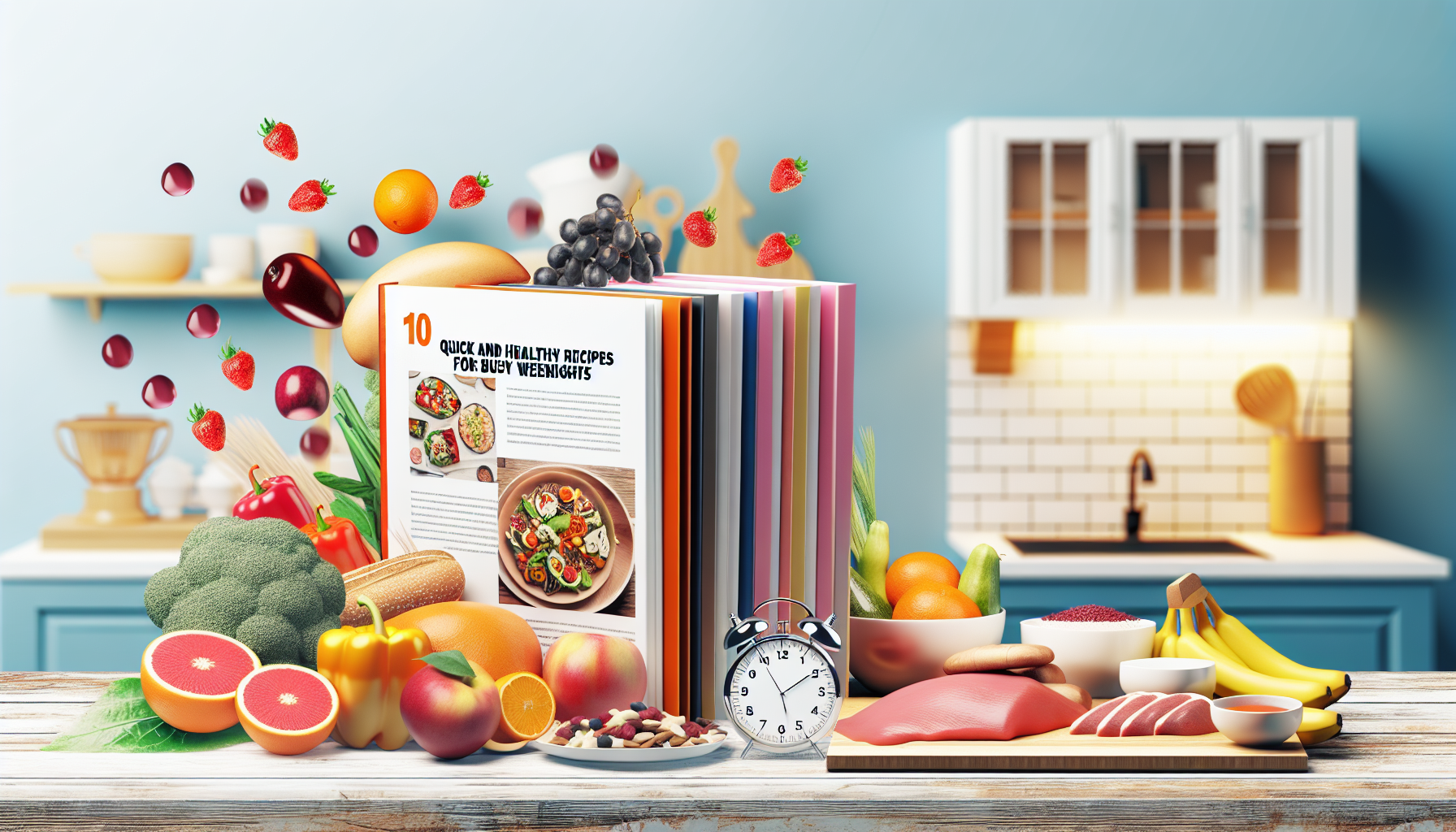
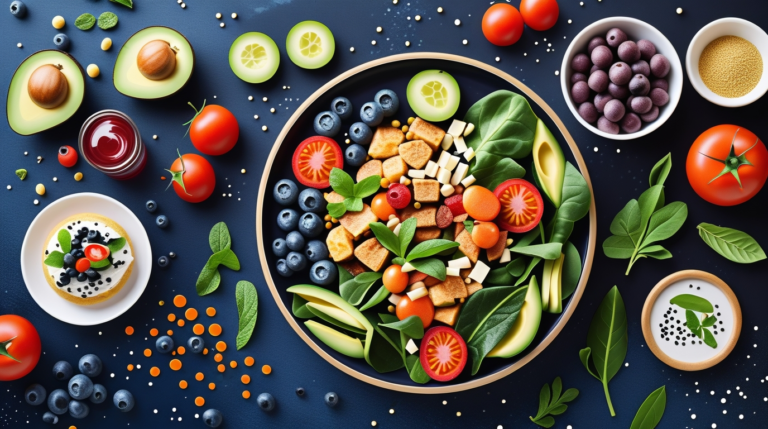
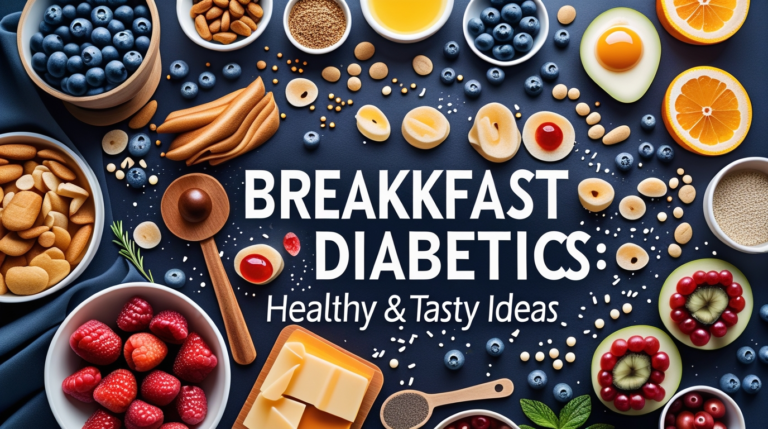
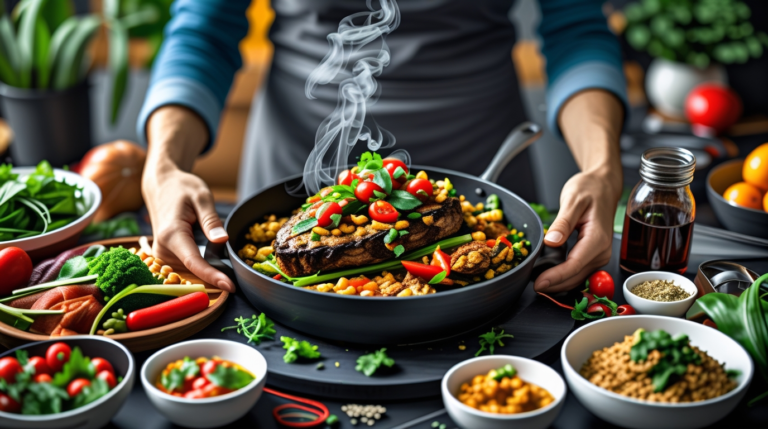
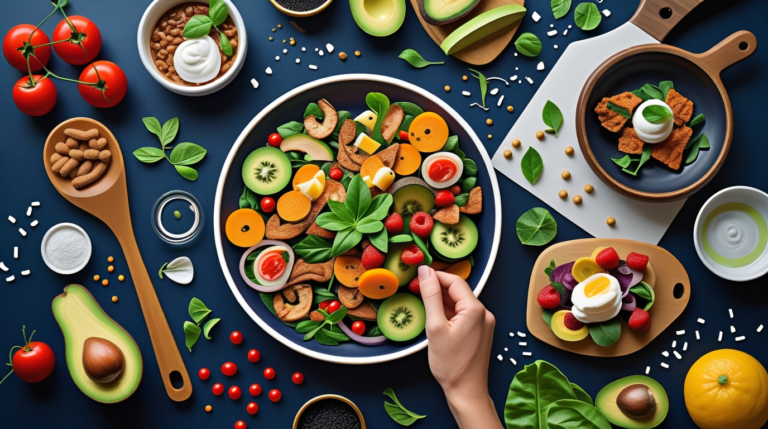
Leave a Comment